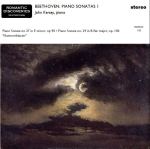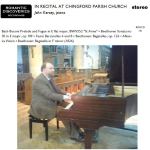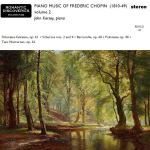A new CD recording has been issued by Romantic Discoveries Recordings.
 Piano Music of Walter Niemann volume 22
Piano Music of Walter Niemann volume 22
Pickwick, op. 93 • Pictures from Chiemsee, op. 131 • Der Artushof, op. 158 • Tales from the Mountains, op. 41 • Scarlattiana, op. 126 (includes first recordings)
John Kersey, piano
RDR CD132
Total time: 78 minutes 35 seconds
1. Pickwick, a cycle after Charles Dickens, op. 93 (21:03)
i. Mr Pickwick ii. Mr Tupman Waltzes iii. The poetic Mr Snodgrass iv. Mr Winkle, the friend of the woods and hunts v. Sam and Mary (Duettino) vi. A morning in the country (Manor Farm) vii. The fat Joe viii. How Mr Weller drives his stagecoach ix. The Ball at Bath x It is over (A backwards glance)
2. Bilder vom Chiemsee, op. 131 (11:39)
i. Summer morning ii. In the monastery church (Fraueninsel) iii. Highland – Dirndl iv. Castle Herrenchiemsee (Herreninsel) v. On the lake vi. Highland – Bua vii. Mending the fishing nets (Fraueninsel) viii. Market day in Prien
3. Der Artushof – suite from old Danzig, op. 158 (11:36)
i. Praeludium (Moderato con moto) ii. Sarabande (Tempo di Sarabanda, largamente e solenne) iii. Menuett (Tempo di Minuetto, Allegretto amabile) iv. Alla Giga (Giocoso animato)
“Now a magical chiaroscuro crept through the murky windows, all the strange pictures and carvings with which the walls are richly decorated, became active and alive.” – E.T.A. Hoffmann, Der Artushof
4. Geschichten aus den Bergen, little Ländler and dances, op. 41 (14:14)
i. Sehr gemütlich und gemächlich ii. Anmutig, in mässigem Zeitmass iii. Ein wenig gehalten und trübe erregt iv. Mit Wärme, night zu schnell v. Ein wenig gehalten, mit sanft verhaltener Melancholie vi. Mit feurigem Aufschwung vii. Ein wenig gehalten, in stiller Wehmut viii. Anmutig und leicht bewegt ix. Mit sanfter Melancholie, ein wenig gehalten x. Den Manen Edvard Griegs – Sehr mässig, mit grösster Wärme xi. Schmerzlich gehalten xii. Mit derb-übermütiger Lustigkeit in Holzschuhen
“On the Wiesenanger, which, walking gently downhill, came up against the wood, and partly also on the harvested fields, there were stalls, tables with people feasting, there were bowling alleys, target shooting, swings, music stages, dance floors and I don’t know what else , towered over by poles with waving flags and swarming with colourful people.” – – Adalbert Stifter
Scarlattiana, three little Sonatas in the style of Domenico Scarlatti, op. 126
5. Sonata no. 1 in D major (4:23)
6. Sonata no. 2 in A minor – i. Allegro marcato, ma leggiero ii. Pastorale – Molto moderato ed amabile iii. Presto leggiero (8:29)
7. Sonata no. 3 in G major – i. Pastorale – Molto moderato e malinconico ii. Allegro capriccioso (6:57)
Our thanks go to Nicolo Figowy and Steffen Herrmann for their generous loan of scores.
Walter Niemann was regarded in 1927 as “the most important living piano composer who knows how to make music from the piano in a subtle and colorful way, although he often enters the field of salon music” (H. Abert, Illustrated Music Lexicon). This most sensitive and introverted master of the piano devoted his life to composition and musical scholarship, also performing his music in concerts and radio broadcasts. Niemann’s vast output for the piano is only now starting to become more widely known. Although his style is generally unashamedly conservative, he was one of the very few German composers to explore Impressionism in music, and this also reflected a fascination with the Far East. Elsewhere, Niemann’s imagination takes us from much Baroque recreation to large-scale epic sonatas, Schumannesque miniatures and even the exploration of early jazz styles. His understanding of the capabilities of the piano was complete, and his works include both collections for young pianists and mature works that exploit the full range of pianistic effect and make significant demands on the performer.
 Beethoven Piano Sonatas volume 2
Beethoven Piano Sonatas volume 2



















